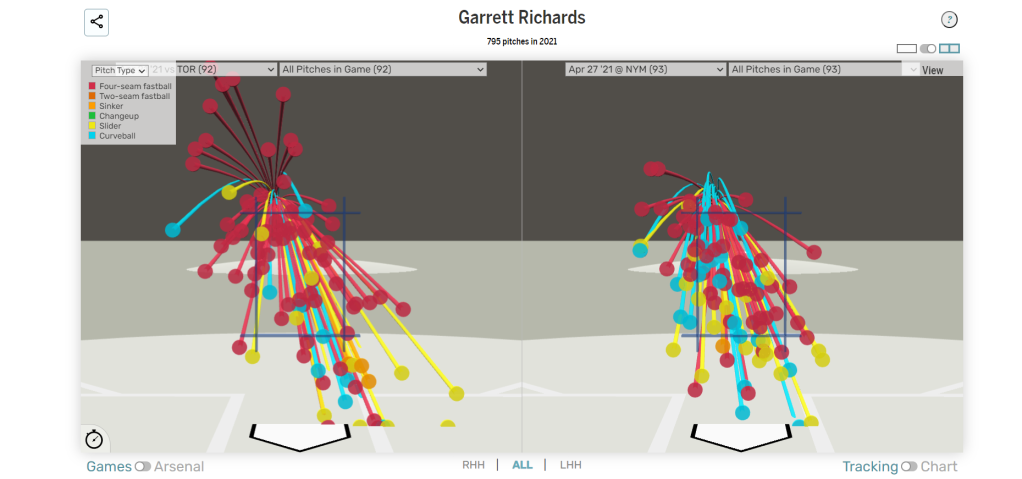Since April 27 Garrett Richards has undergone a resurgence that has made him one of the most improved and winningest pitchers in baseball. In five starts from April 27 to May 21 Richards is 4-0 with a 2.27 ERA. In his previous four starts before that, he was 0-2 with a 6.48 ERA. During the first four starts, Richards had a few that were nothing short of a disasterous. Take a look at some of these performances:
April 4 vs. Baltimore Orioles
2 IP 7 H 6 ER 27.00 ERA
April 21 vs Toronto Blue Jays
4.2 IP 4 H 4 ER 7.71 ERA
Now to be fair, he did have some solid starts. For example, on April 15 against the Minnesota Twins, he pitched five shutout innings in a no-decision. Despite that start, there were still some questions about Richards’ consistency and how long he’d last in this Boston Red Sox rotation. So, how did we get to this new and improved version of Garrett Richards? Let’s take a deep dive into the matter.
Mechanical Changes
The catalyst in this transformation has been the adjustments to his delivery. Red Sox pitching coach Dave Bush highlighted the modifications to Richards’ windup that allowed for better control. Since the change, Richards’ strike percentage has increased to 66% from 57% in his first four starts. Check out the difference below in the videos. The first video is from his April 21 start, which was before the mechanical change. Notice how Richards goes through a traditional full windup. His leg kick is pretty high as well. His knee comes a bit over his front side elbow.
The second video is from May 13 against the Oakland Athletics, which is after the mechanical change. The most noticeable change is the abandonment of the full windup. Richards’ new windup is much more succinct and to the point. Also, notice that the leg kick is a little lower than it used to be, not coming quite all the way up to the elbow. Christian Vazquez noted that the different mechanics “changed his career.”
Variety is the Spice
Another key change is the variance of his pitches. Prior to April 27, he was much more reliant on his fastball. 61.1% of his pitches were fastballs. During that span his fastball garnered -0.9 runs above average, a metric used to measure how well a pitcher performs with a certain pitch. His second most-used pitch was his slider at 23.7% and then his curveball at 15.3%.
After his April 21 start, Richards and the coaching staff decided to change Richards’ philosophy and mix his pitches up more. The fastball usage was down to 53%, the slider was up to 25.5% and the curveball was up to 21.5%. It seems as if the new mechanics have helped the fastball and curveball effectiveness, as they have both increased in runs above average. His wFB is at 2.2 over the last five starts and his wCB went from -1.3 in the first four starts to 0.6 over the last five starts. The two charts below help to illustrate the change in pitch variety.
The graph on the left is before the philosophy change, against the Blue Jays (4/21), and the graph on the right is from his very next start on 4/27, which was against the New York Mets (after the philosophy change). There are two noticeable differences. You can see much more blue (curveball) and yellow (slider) during the 4/27 start. Also, the number of pitches in the strike zone on 4/27 is much different than the 4/21 start.

Moving forward, it will be key for Garrett Richards to continue his solid play. In his last start against the Blue Jays, Richards rebounded from a tough first inning but settled down and ended up pitching 6 2/3 innings, allowing two runs (one in the first inning) on seven hits. It’s been very interesting to watch and to see the adjustments made by Richards.
“Main Photo”
Embed from Getty Images
Players Mentioned:






